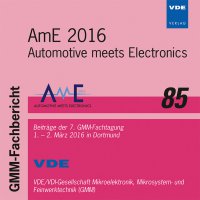A Novel Class of Thermoset Base Materials for 24 and 77GHz Automotive Radar Modules
Conference: AmE 2016 – Automotive meets Electronics - 7. GMM-Fachtagung
03/01/2016 - 03/02/2016 at Dortmund, Deutschland
Proceedings: AmE 2016 – Automotive meets Electronics
Pages: 4Language: englishTyp: PDF
Personal VDE Members are entitled to a 10% discount on this title
Authors:
Ippich, Alexander (Isola Group Dueren, Germany)
Abstract:
Originally a feature only found in high-end cars, the automotive radar market for safety and driver assistance applications is exploding. Systems like automotive cruise control, collision avoidance, automatic braking, pedestrian detection, line change assistance, blind spot detection and parking assistance are being used in an ever increasing number of vehicles. As these sensors find their way into lower cost vehicles, the pressure on module cost is getting ever higher. This requires the use of lower cost base materials and constructions that are easier to manufacture and result in higher yields. Traditionally, highly ceramic filled hydrocarbons and polytetrafluoroethylene (PTFE) materials were used in these applications. But the high material cost, combined with more complex PCB processing and lower yield makes them a poor choice in 24GHz and 77GHz automotive radar modules. A new class of thermoset base materials was introduced, which support the needed low loss characteristics, but have a far lower BOM cost, easier processing and support a higher manufacturing yield. The new materials are compared to the traditional materials in this paper and data is presented, showing their advantages.


